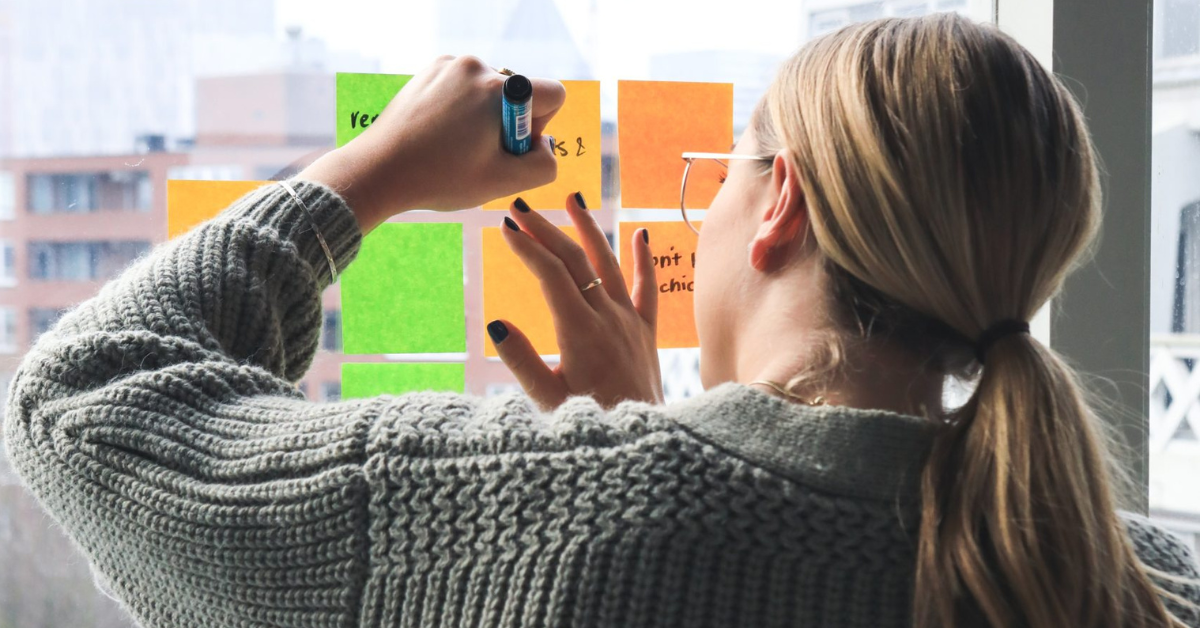
We’ve all been there. You have a to-do list staring back at you, but instead of making progress, you find yourself scrolling, snacking, or suddenly deciding that now is the perfect time to reorganise your bookshelf. Procrastination isn’t about being lazy. It’s often a sign of mental overload, perfectionism, or simply not knowing where to start.
The key to beating procrastination isn’t working harder - it’s working smarter. That means using practical, low-effort strategies that help you start tasks, stay focused, and maintain energy throughout the day. The real trick? Avoiding burnout in the process. If you’re tired of feeling stuck but don’t want to sacrifice your well-being, these five simple productivity hacks will help you get back on track, without grinding yourself into the ground!
1. Use the two-minute rule
If a task takes less than two minutes, do it immediately. We often put off small, simple tasks, letting them pile up and create unnecessary stress. Tackling them right away reduces mental clutter and builds momentum for larger tasks.
For example, replying to a quick email, sending a meeting follow-up, or logging an expense report can all be done in under two minutes. Instead of letting these tasks linger and distract you, completing them immediately keeps your to-do list manageable and your mind clear. Small wins add up, making it easier to stay productive throughout the day.
2. Time block for deep work
Multitasking might seem productive, but it actually slows you down. Instead of juggling multiple things at once, try time blocking - dedicating set periods to focus deeply on a single, high-priority task. This method helps you enter a flow state, where concentration peaks, distractions fade, and productivity soars.
Try blocking 90 minutes in the morning to work on a key project, followed by a short break before shifting to emails or meetings. Tools like Google Calendar or Notion can help schedule these blocks, while turning off notifications ensures uninterrupted focus.
By structuring your day around deep work periods, you’ll work more efficiently, make fewer mistakes, and get more done in less time. All without the mental drain of constant task-switching.
3. Break big tasks into smaller steps
When a task feels overwhelming, it's easy to put it off. The solution? Break it down into smaller, actionable steps. Instead of tackling everything at once, focus on one clear step at a time to make progress more manageable.
For example, if you need to write a report, don’t just write “Complete report” on your to-do list. Instead, break it down into steps like:
- Gather research and key data
- Outline key sections
- Write the introduction
- Draft each section separately
- Edit and proofread
By structuring tasks this way, you’ll reduce stress, increase motivation, and make steady progress without feeling overwhelmed.
4. Don’t forget to take a break
Working non-stop might seem productive, but it often leads to burnout and diminished efficiency. To maintain high levels of productivity, it’s essential to schedule regular breaks. These pauses aren’t just about resting - they’re strategic moments to refresh your mind and return with renewed focus.
Consider the Pomodoro Technique, where you work for 25 minutes, then take a 5-minute break. Alternatively, longer work sessions can be balanced with 15-minute breaks, giving your brain time to reset.
Use these breaks wisely! Take a short walk, practice deep breathing, or engage in a mindfulness exercise. These simple activities can boost concentration, reduce stress, and improve overall wellbeing, ensuring you’re ready to tackle your next task with renewed energy.
5.Set boundaries and eliminate distractions
Distractions are one of the biggest barriers to productivity. Whether it’s constant notifications, chatty colleagues, or an overflowing inbox, these interruptions can derail focus and make tasks take longer than necessary. Setting clear boundaries is key to staying on track.
Start by turning off non-essential notifications and using “Do Not Disturb” mode during deep work sessions. If possible, designate a quiet workspace where you can concentrate without interruptions.
For meetings and collaboration, establish clear expectations - let colleagues know your availability and set specific times for checking emails or responding to messages.
By creating an environment that supports focus, you’ll work more efficiently, reduce stress, and avoid the constant cycle of switching between tasks.
Procrastination, defeated
Procrastination isn’t just about willpower - it’s often a sign that your workflow needs a smarter approach. By tackling small tasks immediately, carving out deep work time, breaking projects into manageable steps, scheduling breaks, and shutting out distractions, you can boost productivity without pushing yourself to the limit.
The key is balance. Staying productive doesn’t mean working every second of the day - it’s about creating sustainable habits that keep you focused, efficient, and in control of your workload.
This blog is part of The Learning Curve, our weekly newsletter packed with leadership insights, workplace strategies, and productivity tips to help you work smarter and lead better. Want in? Get these tips and more in your inbox every week by joining us on The Learning Curve today.


